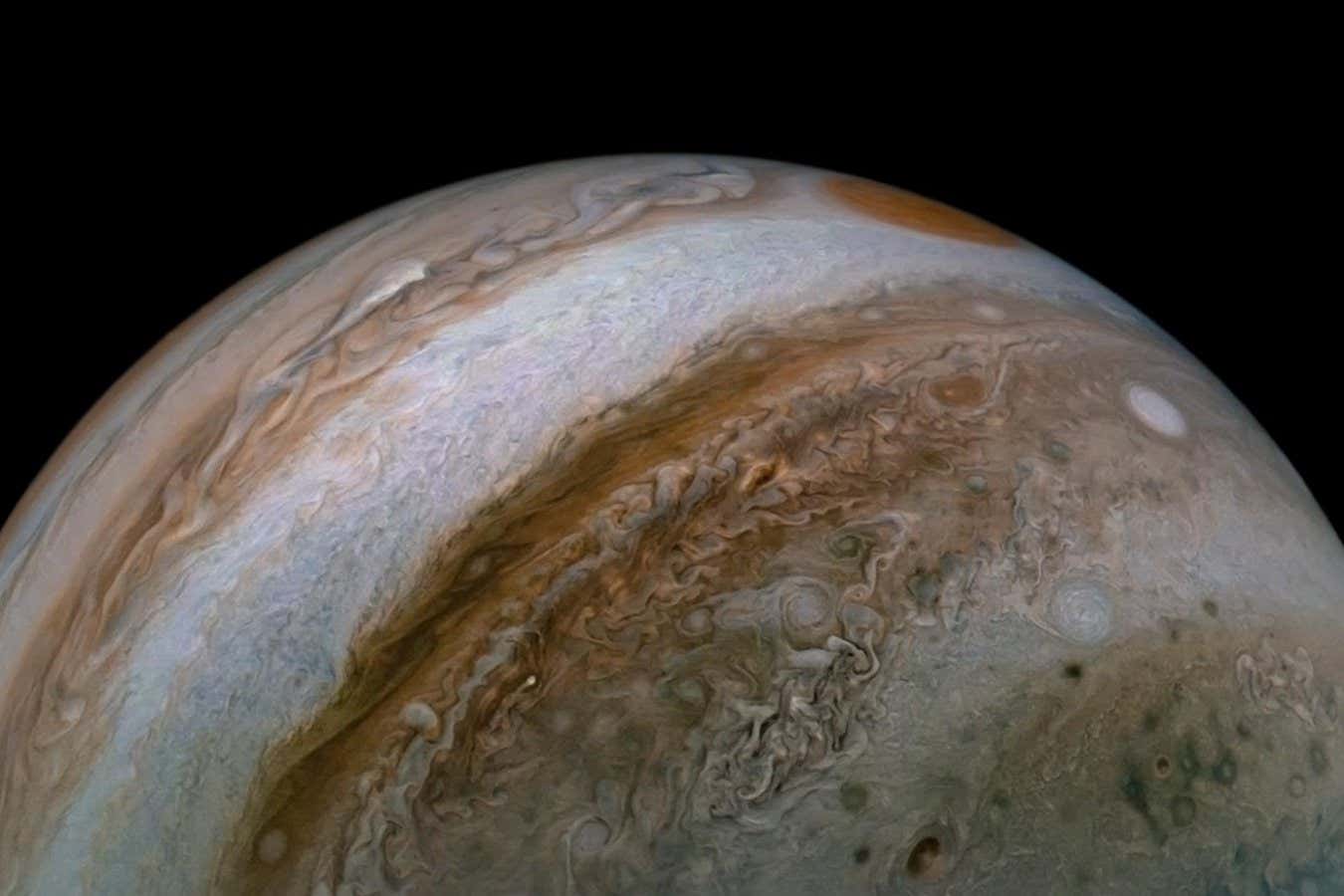Observations from NASA’s Juno spacecraft reveal that Jupiter’s strong magnetic field and the unique properties of its plasma can produce a truly novel kind of extraterrestrial wave near its poles
By Karmela Padavic-Callaghan
10 July 2025
The plasma near Jupiter’s poles is capable of unusual behaviour
NASA/JPL-Caltech/SwRI/MSSS; Oleksuik © CC NC SA
The cosmic neighbourhood of Jupiter is one of the more peculiar places in the solar system, and the plasmas that reside there are no exception. They ripple with a never-before-seen type of wave.
Read more
This mind-blowing map shows Earth’s position within the vast universe
Robert Lysak at the University of Minnesota studies auroras – not just the mesmerising displays of green and blue light on Earth, but also swirls of mostly invisible ultraviolet radiation near the poles of Jupiter.
The key to understanding these alien auroras is understanding the motion of the plasmas – soupy mixtures of charged particles and atoms surrounding the planet – that produce their glow. Based on data collected by NASA’s Juno spacecraft, Lysak and his colleagues found that Jupiter’s auroral plasmas oscillate with a new kind of wave.
The wave is a hybrid of two types of well-understood plasma waves: Alfvén waves, which are produced by the motion of the plasma’s charged atoms, and Langmuir waves, which reflect the movement of electrons in the plasma. Lysak says that, because electrons are much lighter than charged atoms, the two types of waves usually jiggle at very different frequencies.
But the area near Jupiter’s poles has just the right properties for the two to jiggle similarly and combine. This is because the plasmas there have exceptionally low densities and the planet holds them in a strong magnetic field.
